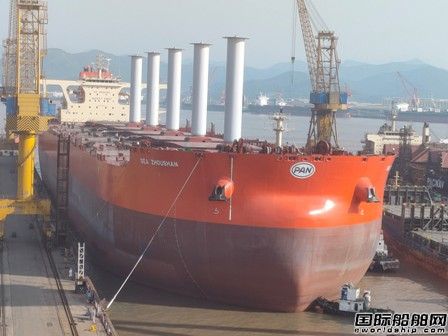
Current LocationпјҡHome - News - Industry

|
|||
| Publishedпјҡ2021.05.16 News SourcesпјҡQingdao Gute Ship Supplies Co., Ltd. Viewsпјҡ | |||
|
Chinese shipyard relay! Vale has welcomed the world's first "wind-driven" ore carrier
Built by New Era Shipbuilding, five rotor sails have been installed in the Zhoushan Pacific Ocean. Two Chinese shipyards have finally completed the whole project, and the Vale Ecological Shipping Program has welcomed the world's first and largest "Wind Power" bulk carrier. 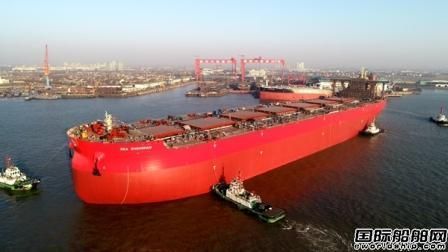
The Sea Zhoushan has been built with rotor sail technology in mind, with the Shanghai Ship Research and Design Institute responsible for ship design and rotor sail integration. Following construction, Sea Zhoushan completed the installation of rotor sails at Pacific Ocean Engineering (Zhoushan) Co., Ltd. This is the world's first project to install rotor sails on a very large ore carrier. 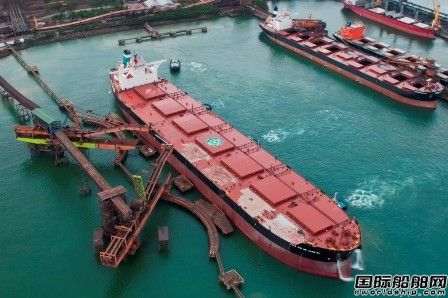
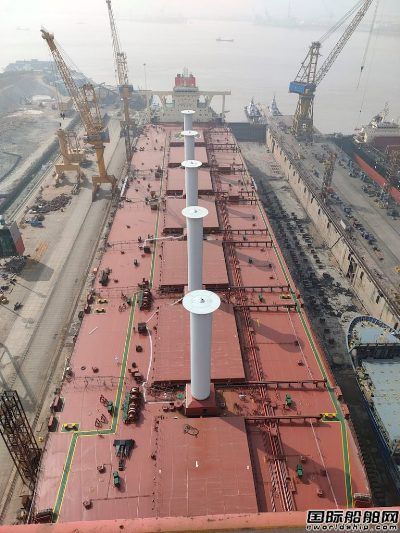
Vale's Sea Zhoushan is the largest installation of NorsePower's rotor sail to date. According to Norsepower, rotor sails cost between 1 million and 4 million euros to install, depending on the ship's project size, with Vale's Guaibamax project costing several million euros. The rotor sails installed on the Sea Zhoushan are cylindrical in shape. Each rotor sail is 4 meters in diameter and 24 meters high, which is equivalent to the height of a seven-story building. During operation, due to the Magnus effect, the rotor sails spin at different speeds depending on the ship's environment and operating conditions, creating a pressure differential that pushes the ship forward. According to NorsePower, the system is fully automated and can be activated automatically based on whether the wind saves fuel consumption and emissions, and optimizes crew time and resources. At the same time, in order to facilitate cargo operations in the port, the rotor sail can be tilted through the hydraulic cylinder without affecting port loading and unloading. Tuomas Riski, CEO of NorsePower, said: "We are delighted to be working with Vale to support them in maximising the propulsion power of wind to reduce carbon and other emissions and to protect the sustainability of the wider value chain. The five tilted rotor sails will allow Vale to maintain flexible cargo operations while also saving fuel and reducing emissions. The installation of our rotor sail on the first VLOC demonstrates that our technology can be used in a variety of operating conditions and ship types." Vale has launched an "eco-shipping programme" to take delivery of the first bulk carrier equipped with air lubrication systems 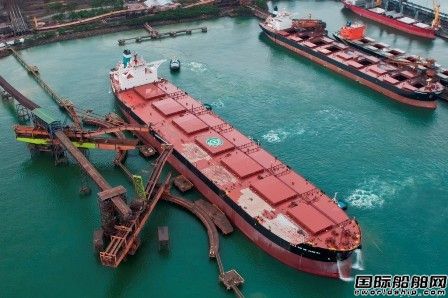
In early June, Vale is expected to take delivery of the first Guaibamax equipped with air lubrication. The technology reduces water friction on the ship's hull by forming a layer of bubbles under the ship. According to conservative estimates, the technology will reduce fuel consumption by 5-8 per cent and is expected to reduce emissions from Vale's iron ore shipping by 4.4 per cent a year. Vale has also been preparing for the introduction of Marine fuel alternatives. Dozens of second-generation VLCCs already in operation have been designed to accommodate a future LNG system, including an under-deck compartment to accommodate LNG tanks for the entire voyage. The eco-shipping program is developing multi-fuel tanks that will store and consume not only liquefied natural gas, but also methanol and ammonia. Bermelho said the introduction of energy efficiency improvements such as rotor sails and air lubrication systems would reduce the need for Marine fuel per ship and promote the use of low-carbon fuels. Preliminary studies on the Guaibamax project reductions of up to 23 per cent by switching to LNG and as much as 40 to 80 per cent by switching to methanol and ammonia. Vale has invested heavily in adopting new technologies and renewing its fleet to incorporate the most advanced technologies in energy efficiency and environmental innovation into its shipping. Starting in 2018, Vale will put 400, 000 tons of second-generation Valemax into operation; Starting in 2019, Vale will put another 325,000 tonnes of Guaibamax into operation. These ships are among the most energy-efficient in the world, reducing carbon dioxide emissions by up to 41% compared with the 180,000 tonne Capesize ships built in 2011. |
|||
| This Paper Is Divided Into 1 Page | |||
| Next:Waigaoqiao Shipbuilding was named after Shandong Defeng, a 180,000 ton bulk carrier built by Shandon | |||
| Previous:Construction of Aosin Yachts' first cryogenic FRP tuna vessel has begun | |||







